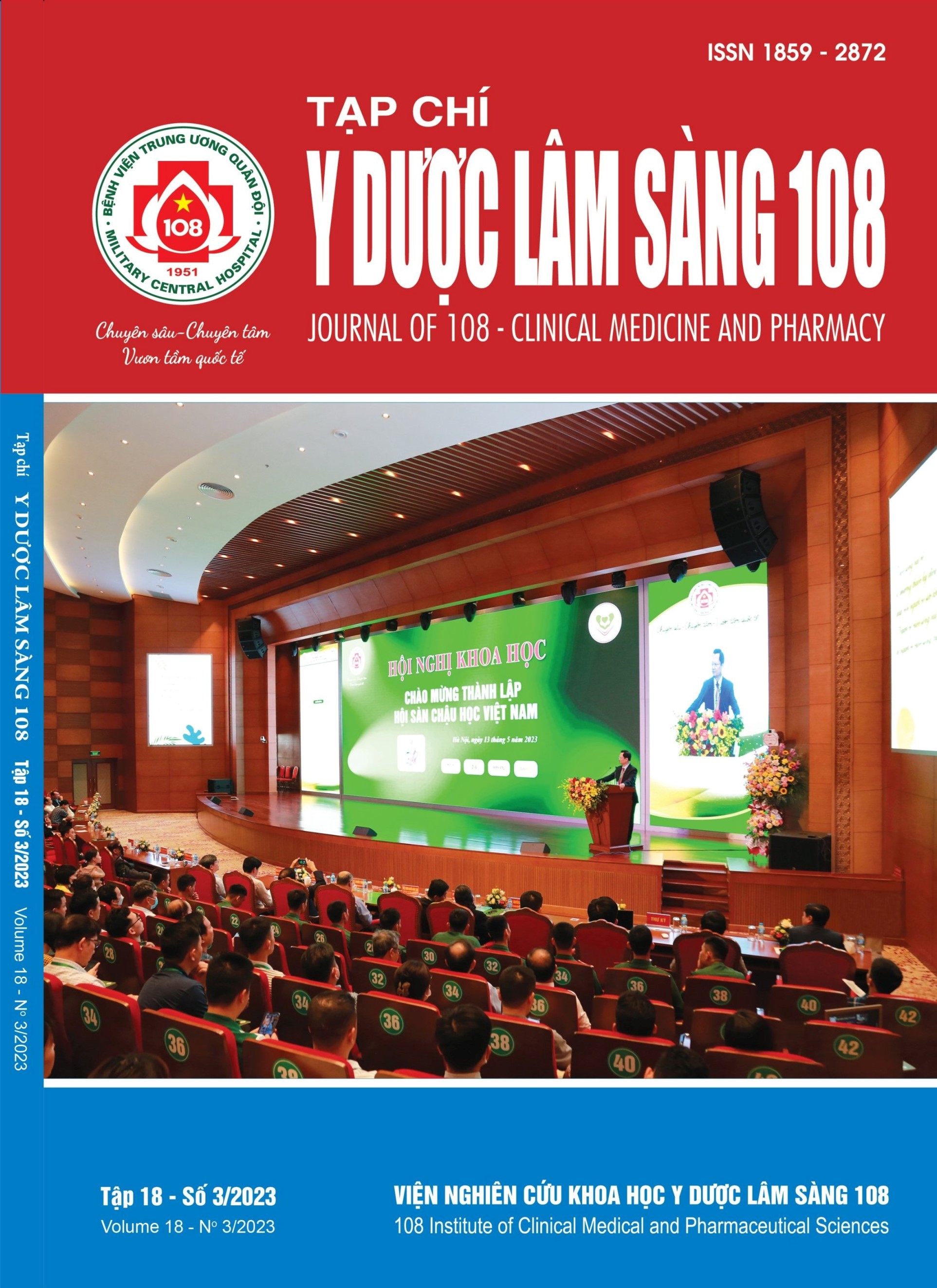Clinical manifestations of the infections of Chlamydia trachomatis in infertile women attending the National Hospital of Obstetrics and Gynecology (2020-2022)
Main Article Content
Keywords
Abstract
Objective: To describe the clinical characteristics in infertile women with infections of Chlamydia trachomatis attending the National Hospital of Obstetrics and Gynecology, Vietnam. Subject and method: A cross-sectional design was conducted between January 2020 and December 2022. A total of 119 infertile women with infections of C. trachomatis and 642 negative controls were selected at the National Hospital of Obstetrics and Gynecology in Hanoi city, Vietnam. All patients were analyzed for C. trachomatis presence by Cobas 4800 CT/NG Test (Roche, Germany) according to the manufacturer’s recommendations. Result: Among infertile women with infections of C. trachomatis, abnormal vaginal discharge (67.22%) was the most frequent, followed by lower abdominal pain (40.34%), vaginal itching (21.01%), dyspareunia (16.81%), vulvar burning (15.13%), painful micturition (15.13%), and abnormal uterine bleeding (5.88%). Cervicitis, vaginitis and fallopian tube occlusion represented 80.67%, 75.63%, and 45.45%, respectively. The ratio of all clinical manifestations in infertile women with C. trachomatis infection was significantly higher than that in subfertile patients without C. trachomatis infection. Conclusion: The syndromes and signs in infertile women who have C. trachomatis infection are quite widespread but not for specific diagnosis.
Article Details
References
2. Hussen S, Wachamo D, Yohannes Z, Tadesse E (2018) Prevalence of Chlamydia trachomatis infection among reproductive age women in sub Saharan Africa: a systematic review and meta-analysis. BMC Infectious Diseases 18(1): 596.
3. WHO (2007) Global strategy for the prevention and control of sexually transmitted infections: 2006 - 2015. In: Breaking the chain of transmission: 61.
4. Tjahyadi D, Ropii B, Tjandraprawira KD, Parwati I, Djuwantono T, Permadi W, Li T (2022) Female urogenital Chlamydia: Epidemiology, chlamydia on pregnancy, current diagnosis, and treatment. Annals of Medicine and Surgery 75: 103448.
5. Trần Hậu Khang (2008) Áp dụng kỹ thuật PCR trong chẩn đoán nhiễm Chlamydia trachomatis đường sinh dục tiết niệu. Đề tài khoa học công nghệ cấp Bộ Y tế.
6. Rawre J, Dhawan B, Malhotra N, Sreenivas V, Broor S, Chaudhry R (2016) Prevalence and distribution of Chlamydia trachomatis genovars in Indian infertile patients: A pilot study. Journal of Pathology, Microbiology and Immunology 124(12): 1109-1115.
7. Nguyễn Hải Đăng, Lê Minh Tâm (2020) Một số yếu tố liên quan đến nhiễm Chlamydia trachomatis ở phụ nữ vô sinh. Tạp chí Phụ sản 18(3), tr. 54-59.
8. Trần Đình Vinh, Phạm Chí Kong, Huỳnh Minh Nhật, Lê Hà Yến Chi (2020) Tình hình nhiễm Chlamydia trachomatis ở bệnh nhân đến khám tại Bệnh viện Phụ sản - Nhi Đà Nẵng năm 2018 - 2019. Tạp chí Phụ sản 18(2), tr. 57-62.
9. Bakhtiari A, Firoozjahi A (2007) Chlamydia trachomatis infection in women attending health centres in Babol: Prevalence and risk factors. Eastern Mediterranean health journal 13(5): 1124-1131.
10. Harahap J, Lutan D, Sarumpaet S, Eryando T (2014) Syndromic Approach and Spatial Analysis of Chlamydia trachomatis among Mother with Vaginal Discharge in Medan. Journal of Biology, Agriculture and Healthcare 4(9): 76-82.
 ISSN: 1859 - 2872
ISSN: 1859 - 2872
